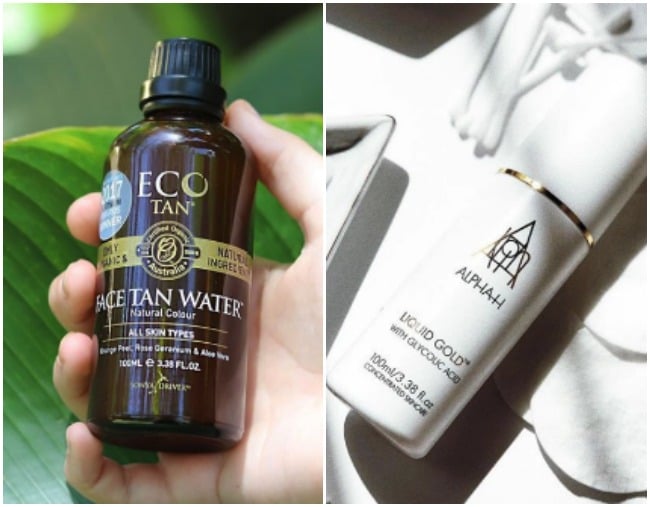
Love the idea of faux sun-kissed and glowing face year ‘round, but want to use active skincare too? You’re not alone.
But it’s not quite as easy as slapping it all on and expecting results. You’re going to need a clever routine, because face fake tan is not friends with retinol or alpha hydroxy acids (two of the main players.)
So, just like those two groups of your mates who don’t get along, you’ll need to catch up with them on separate nights. Here’s how to make it work.
But first, a recap.
What is retinol and how do you use it?
Retinol is a form of Vitamin A and is well-known for promoting skin cell renewal which in turn helps to reduce the appearance of fine lines and wrinkles. Basically, an anti-ageing powerhouse. It is pretty potent though, and needs to be introduced into your routine slowly.
“As a general rule for a healthy skin, introducing a .5% retinol 2-3 times per week of an evening, either neat or mixed with a hydrating moisturiser is a good way to start, as your skin becomes conditioned to the active ingredient,” says Nicole Stubbs, skin therapist and owner of Tribe Natural Beauty.
“Remember to be very mindful to use SPF after using active ingredients on your skin as sun sensitivity is increased,” she says.
When to start?
“I wouldn’t recommend starting any earlier than your late twenties as skin is often too sensitive for retinol,” says Meredith Langley, owner of The Beauty Room Cosmetic Clinic. “But I tell my clients it’s never too late to start using it and it can make a big difference. I personally like to apply my retinol in a serum on a clean dry face at night before I go to bed followed by moisturiser.”